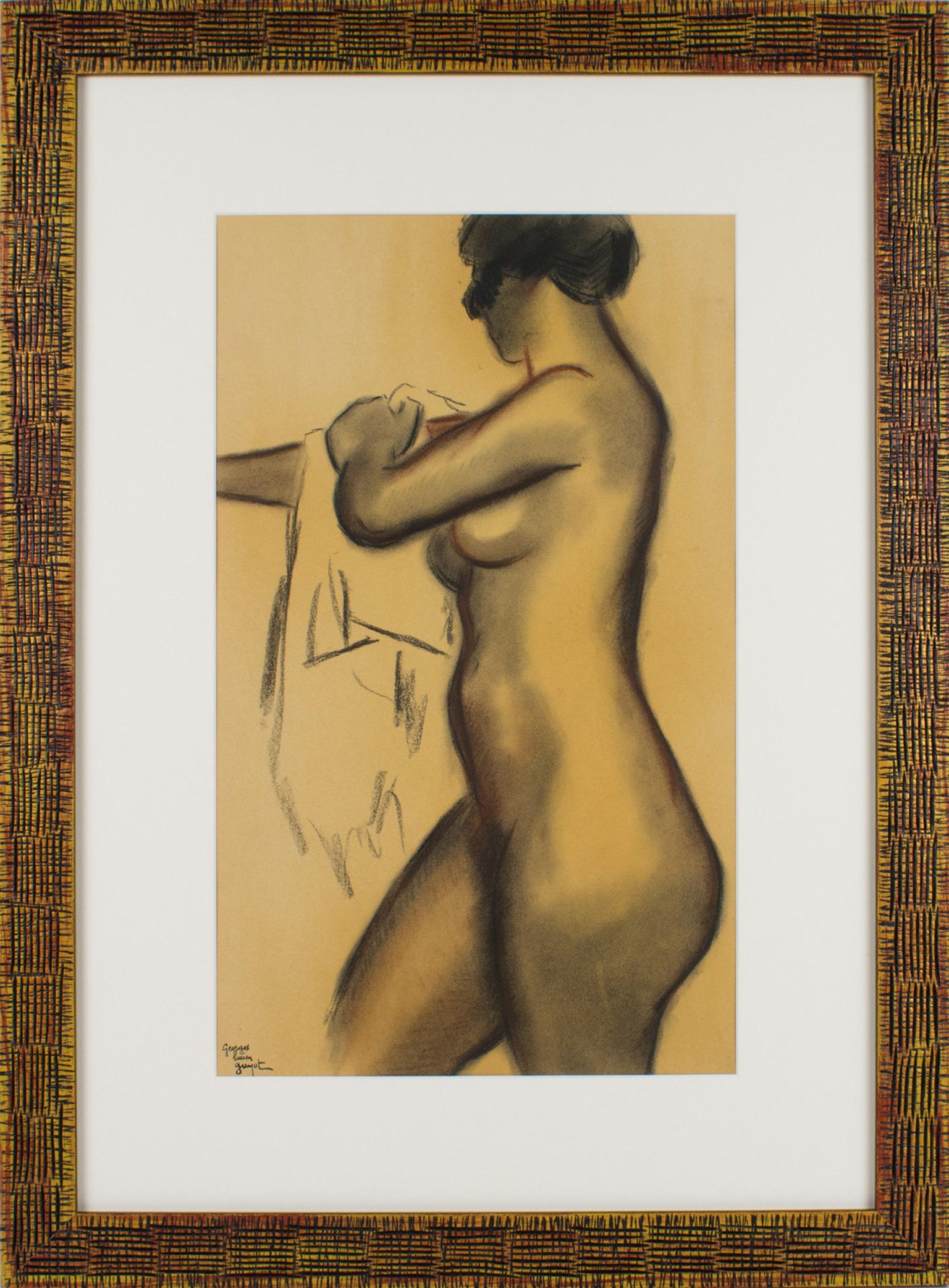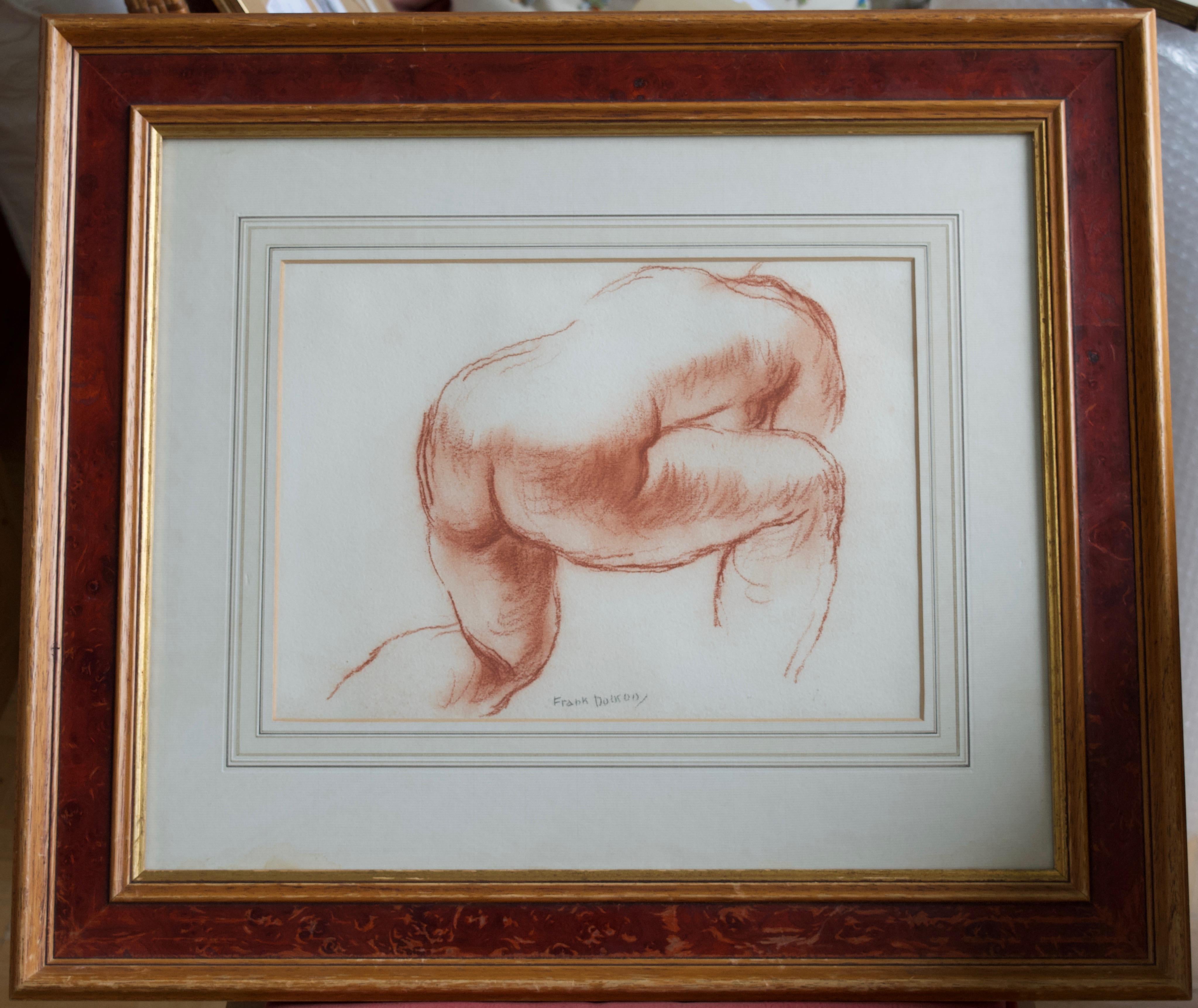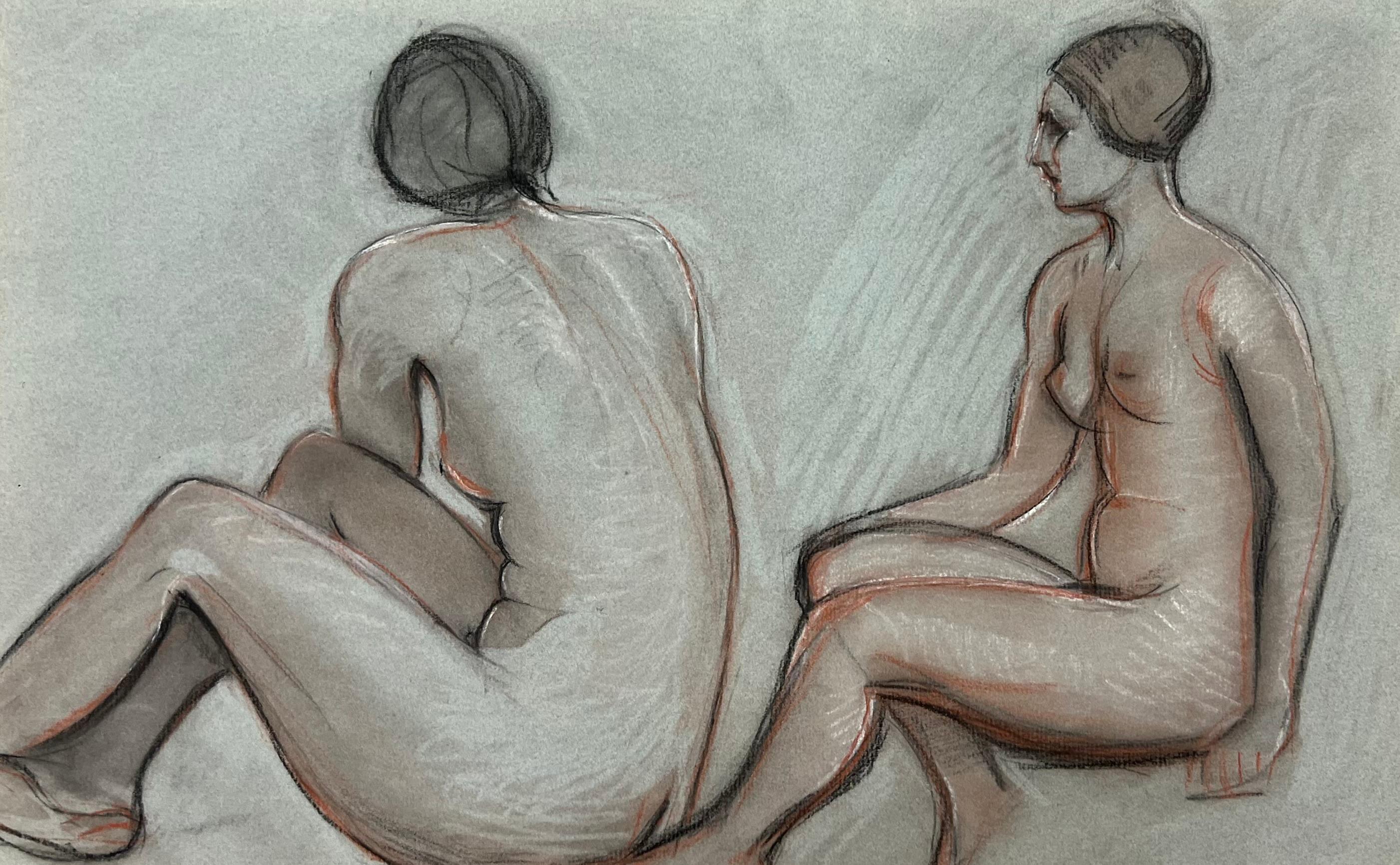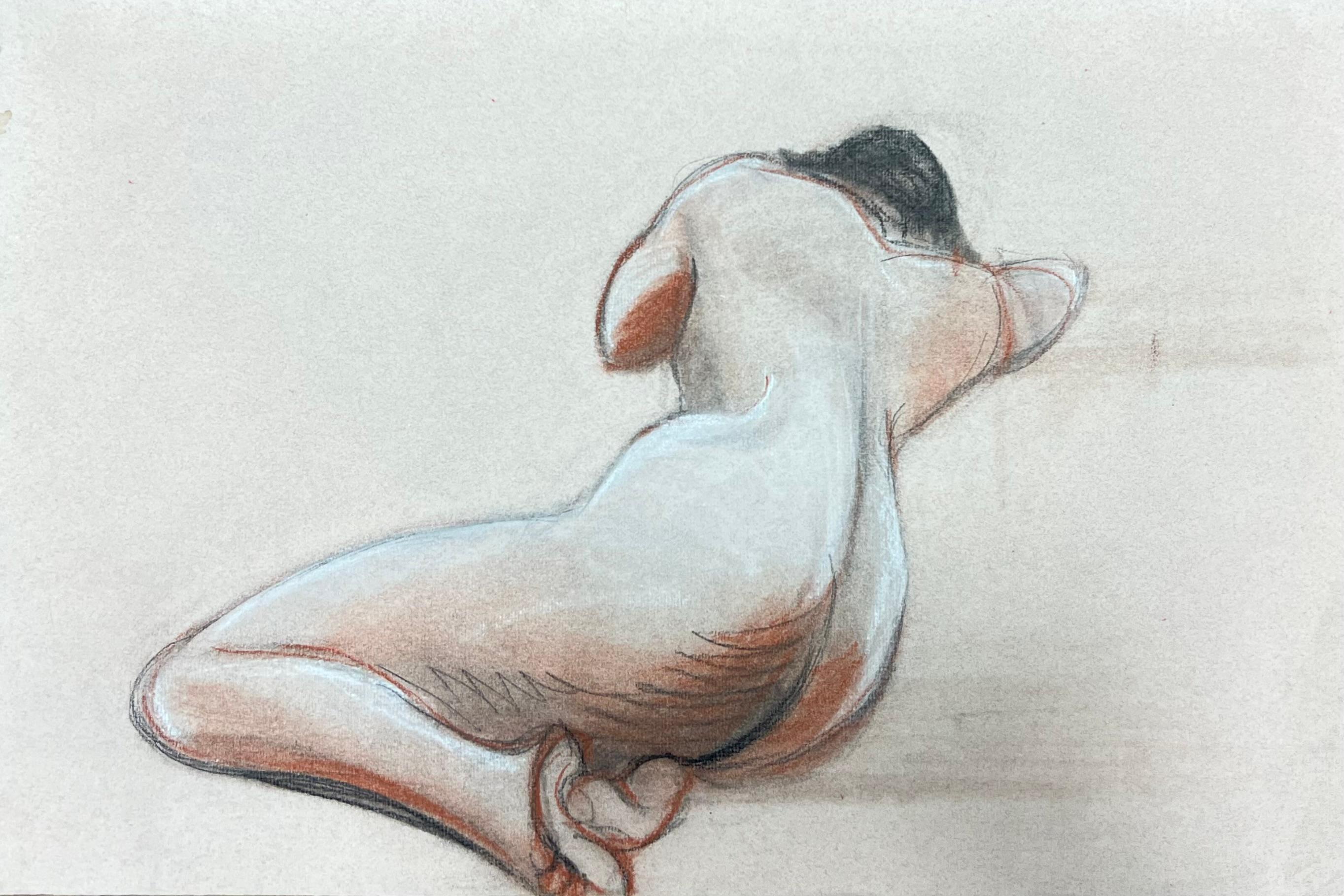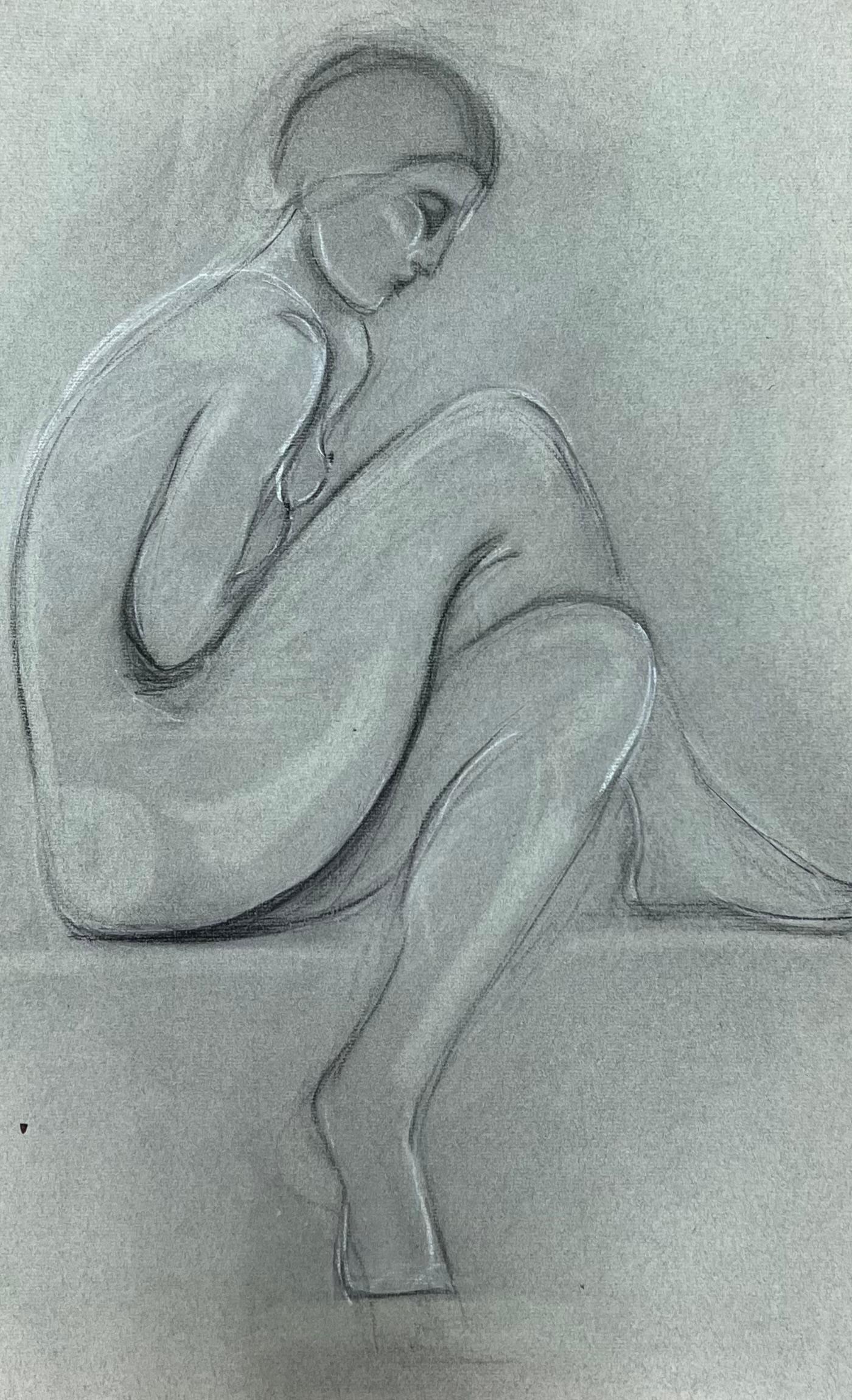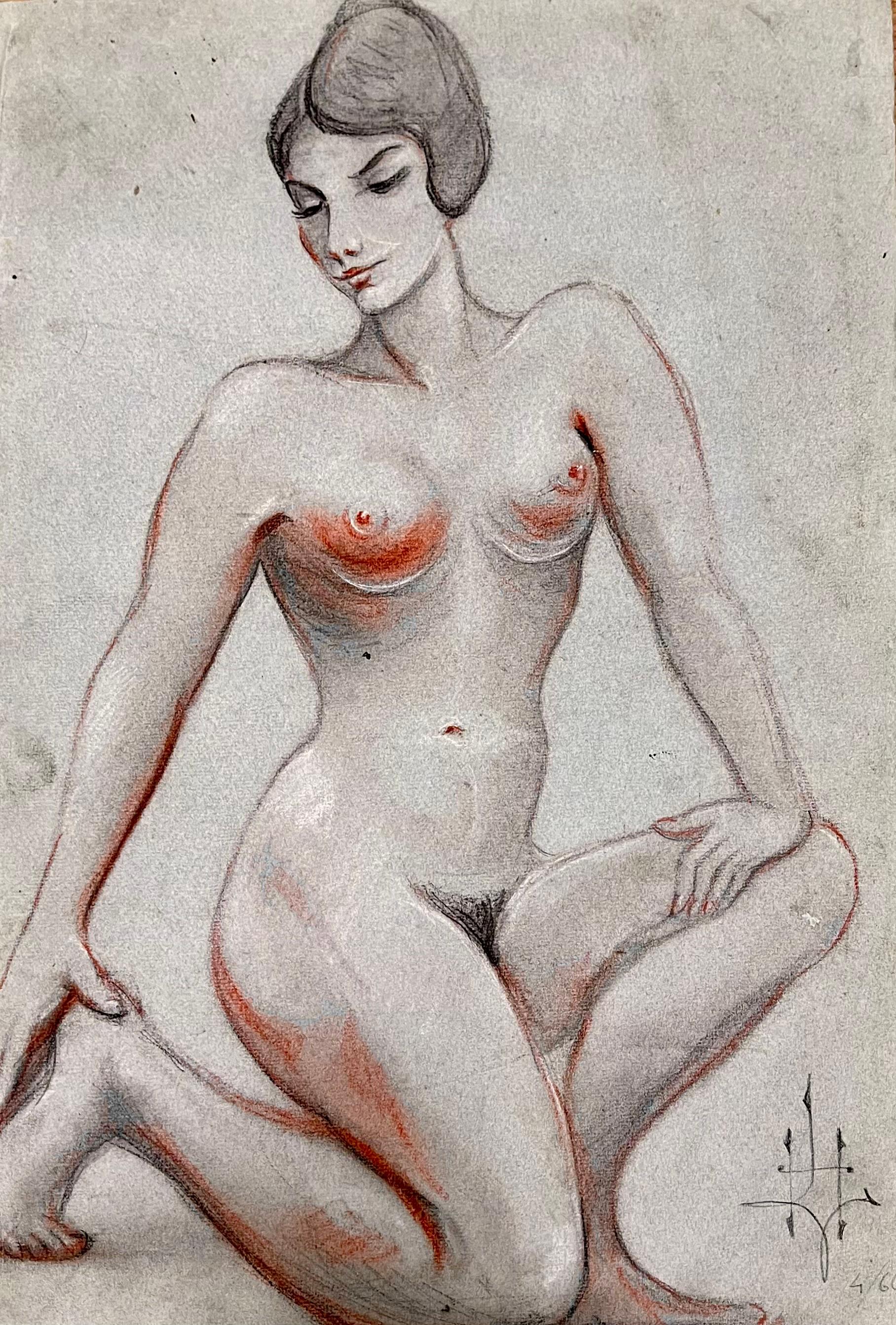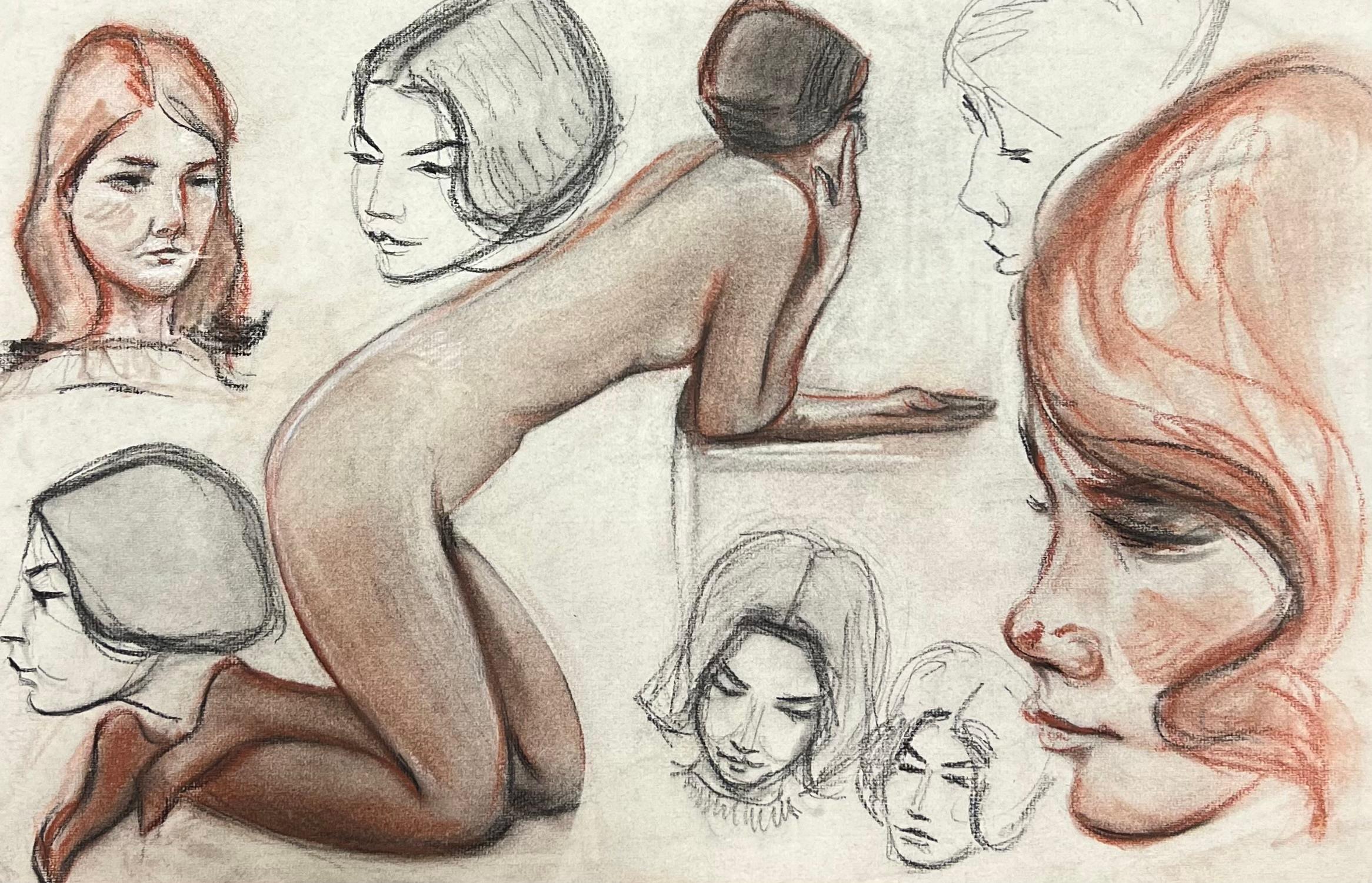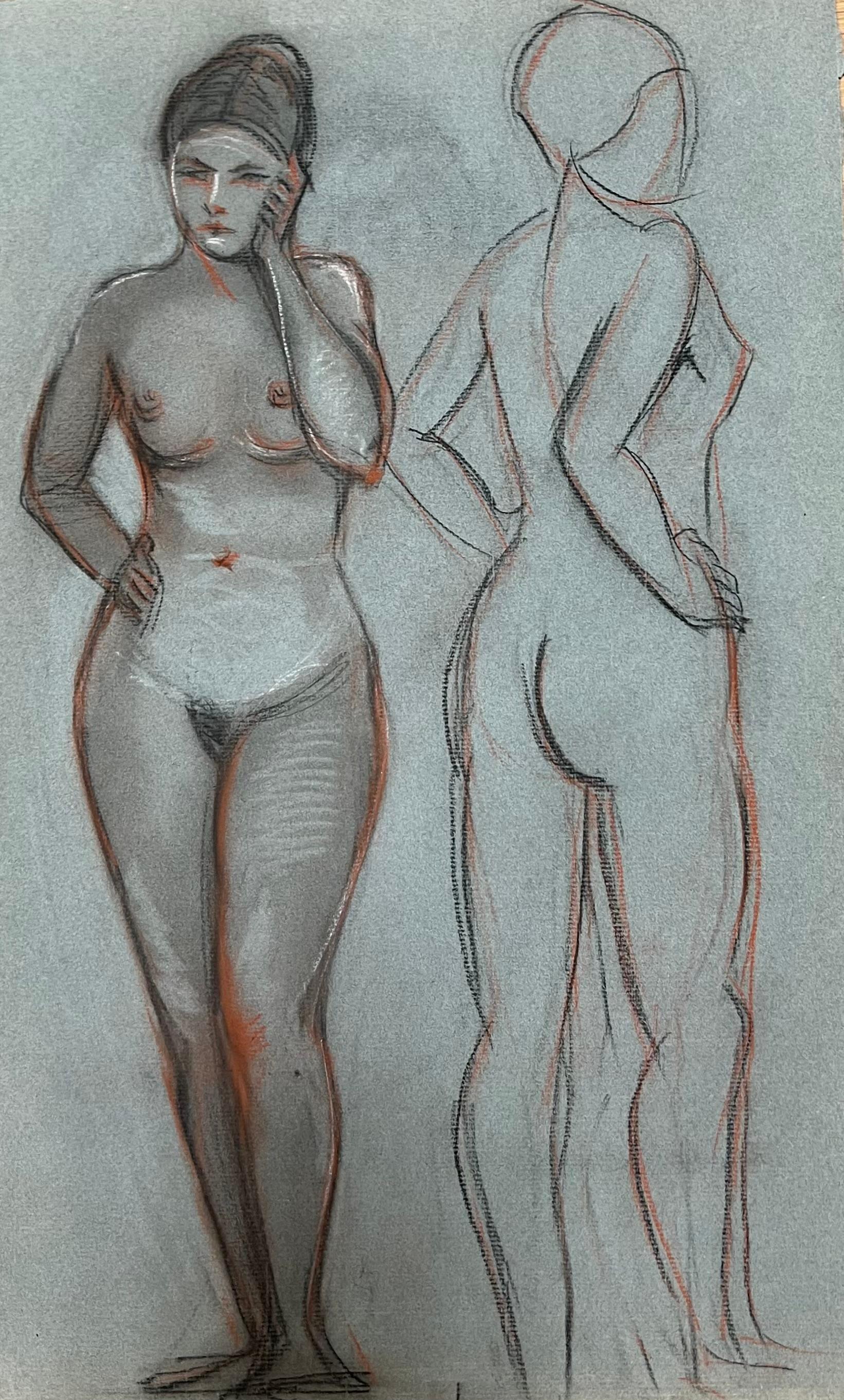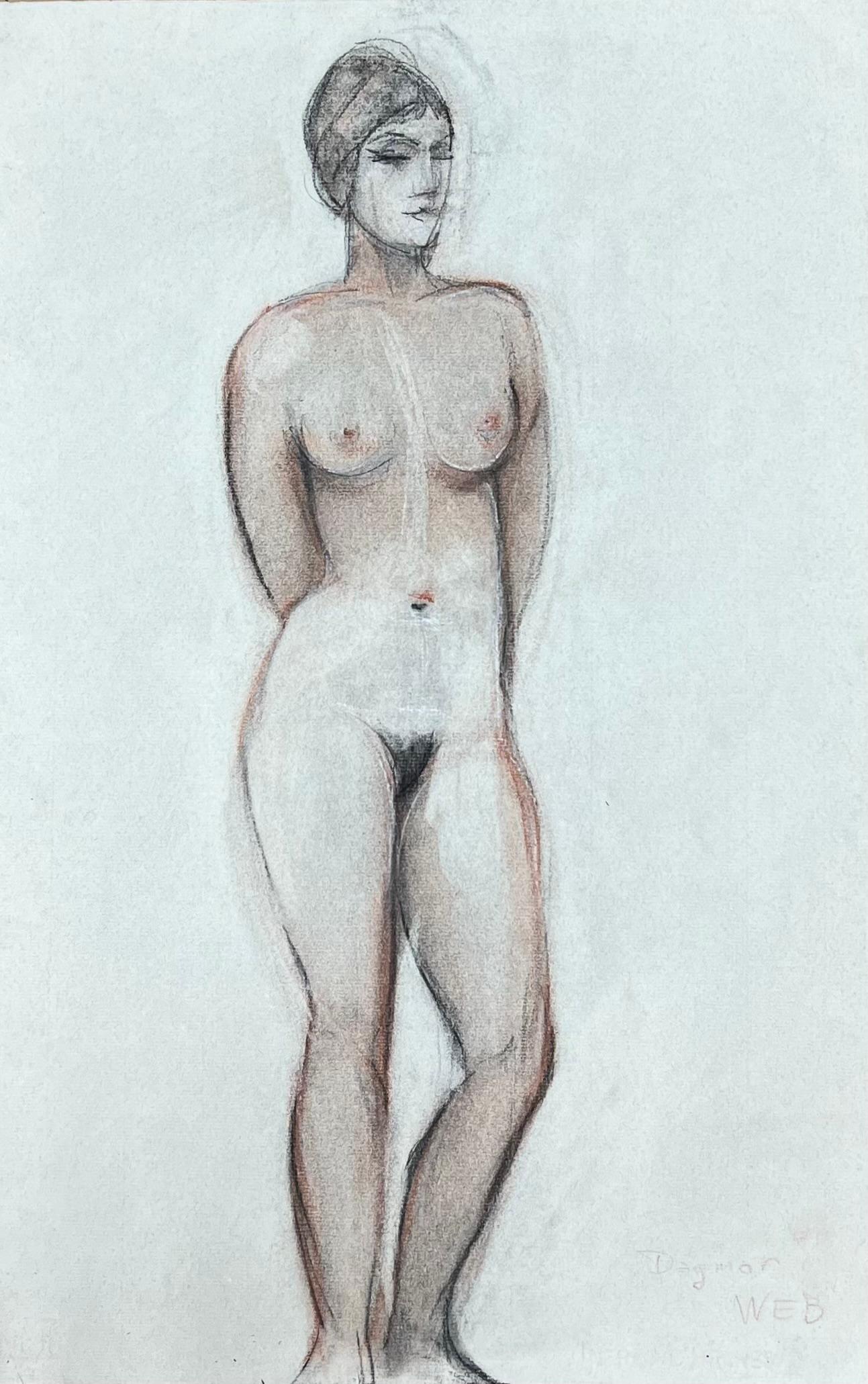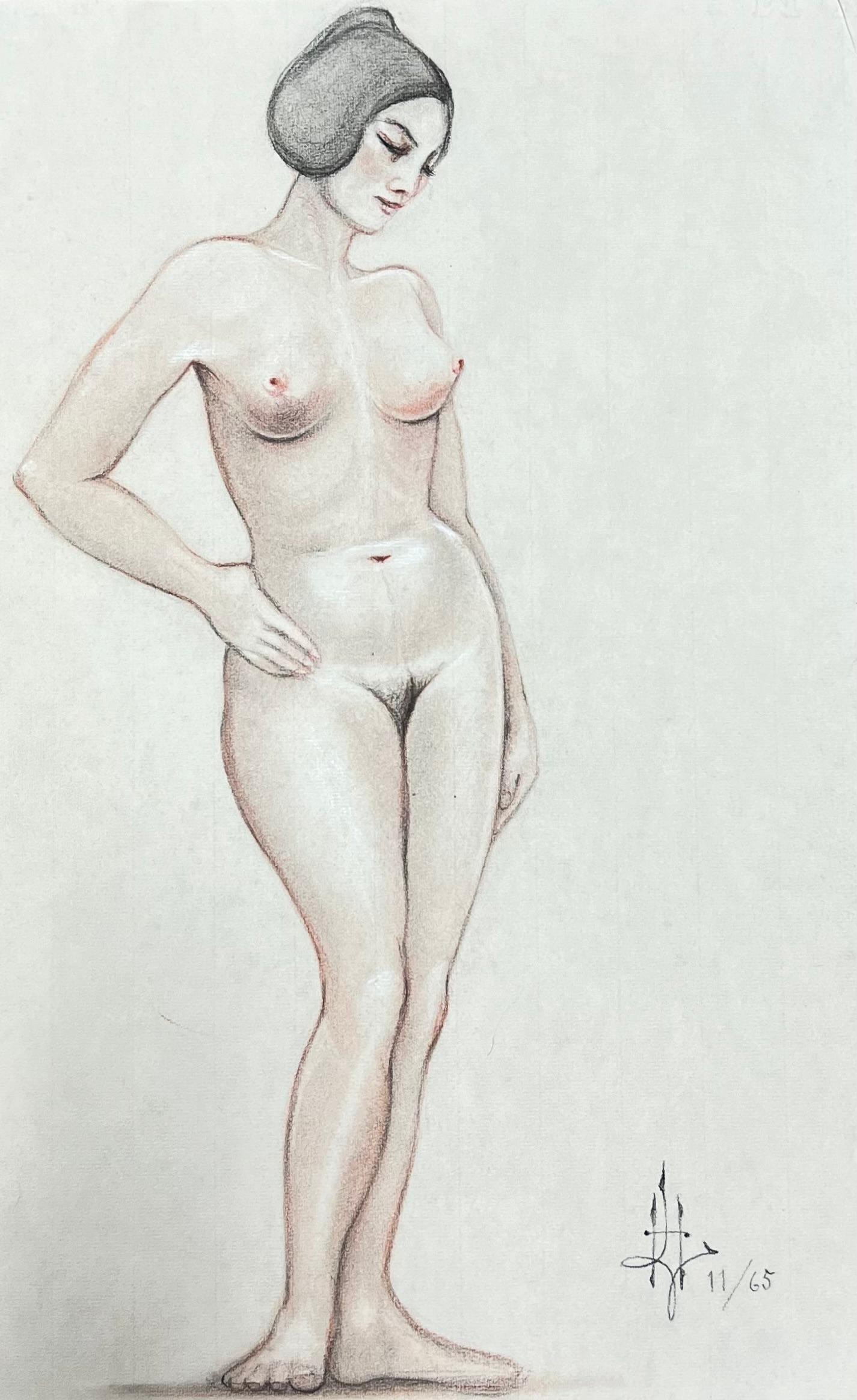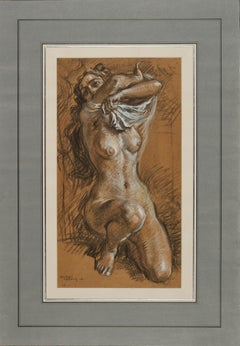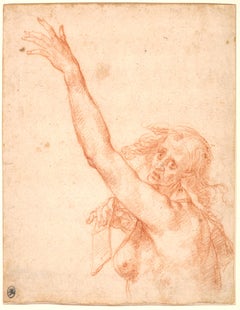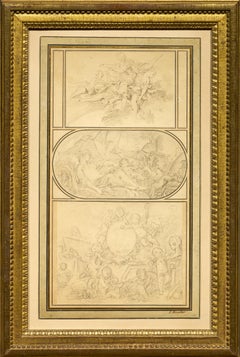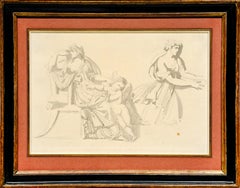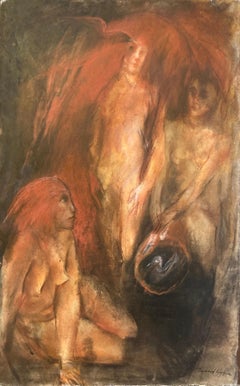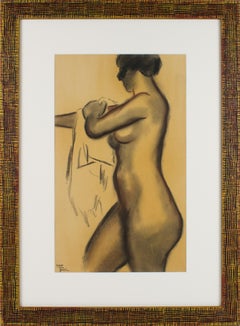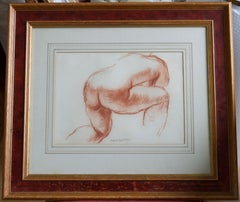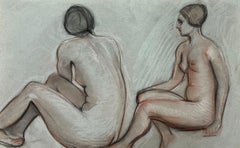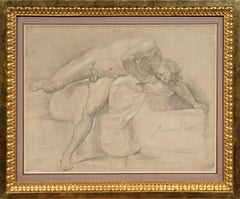
A spectacular Study of a sleeping nude Man by Pompeo Batoni (1708 - 1787)
View Similar Items
Want more images or videos?
Request additional images or videos from the seller
1 of 13
Pompeo Batoni A spectacular Study of a sleeping nude Man by Pompeo Batoni (1708 - 1787)
About the Item
- Creator:Pompeo Batoni (1708 - 1787, Italian)
- Dimensions:Height: 21.63 in (54.95 cm)Width: 26.13 in (66.38 cm)
- Medium:
- Movement & Style:
- Period:
- Condition:16 ¼” x 20 ¼” (41.2 x 54.2 cm) - Framed: 21 5/8” x 26 1/8” (55 x 66.5 cm) Black chalk heightened with lead white on brown prepared paper Neoclassical gilded frame with rais-de-cœur motif - France 19th century.
- Gallery Location:PARIS, FR
- Reference Number:1stDibs: LU1568215374242
About the Seller
5.0
Vetted Professional Seller
Every seller passes strict standards for authenticity and reliability
Established in 2020
1stDibs seller since 2021
9 sales on 1stDibs
Authenticity Guarantee
In the unlikely event there’s an issue with an item’s authenticity, contact us within 1 year for a full refund. DetailsMoney-Back Guarantee
If your item is not as described, is damaged in transit, or does not arrive, contact us within 7 days for a full refund. Details24-Hour Cancellation
You have a 24-hour grace period in which to reconsider your purchase, with no questions asked.Vetted Professional Sellers
Our world-class sellers must adhere to strict standards for service and quality, maintaining the integrity of our listings.Price-Match Guarantee
If you find that a seller listed the same item for a lower price elsewhere, we’ll match it.Trusted Global Delivery
Our best-in-class carrier network provides specialized shipping options worldwide, including custom delivery.More From This Seller
View AllStudy for the Spring (preparatory to the Four Seasons) by René-Marie Castaing
Located in PARIS, FR
René-Paris Castaing, winner of the Grand Prix de Rome in 1924, left a large body of work, both sacred and secular. Many churches in the Pyrénées-Atlantiques, in South-West France still bear witness to the diversity of his talent. In 1942, he began a major decoration project for the Château de Diusse, in the north-east of the county, including an allegory of the four seasons. The vigorous pastel we are presenting here is a study for Spring, depicted as Flore undressing. This commission was a veritable swan song for the artist, who died a year later at the age of 47.
1. René-Marie Castaing, the great inter-war painter in Pau
René-Marie Castaing was born in Pau on December 16th 1896. His father, Joseph Castaing, was also a painter: he was the official portraitist of Pau's high society, which was particularly cosmopolitan at the end of the century, when many rich foreigners spent the winter in Pau, taking advantage of the mild weather to enjoy an outdoor lifestyle punctuated by hunting, horse ridings and golf.
René-Marie Castaing was admitted to the Ecole Nationale Supérieure des Beaux-Arts in Paris in April 1920 and entered the studio of Paul-Albert Laurens (1870-1934). In 1924, he was awarded the First Grand Prix de Rome for Painting, which earned him a stay at the Villa Médicis for more than three years. He then returned to Pau in 1928, where he lived until his death.
Castaing's work is marked by the academic tradition, in which drawing plays as important a role as painting. Although his drawings are often sketches that help to set up large painted compositions, they stand as independent artworks in which the artist fully expresses the vivacity of his talent.
Castaing was a fervent Christian and religious painting played an essential part in his work, as shown by the decorations he created for the churches of Bizanos, Borce, Bidache and Salies-de-Béarn. The painter also created several secular decorations, such as that for the dining room of the Villa Saint-Basil's in Pau in 1935, and the Hunting at the Albret’s time commissioned in 1940 by the Prefecture of Pau. The décor created in 1942-1943 for the Château de Diusse, a mansion located north-east of Pau, was his last large-scale décor, as the painter died shortly after its completion on December 8th 1943.
2. Description of the drawing
Our pastel depicts an eminently secular theme: Spring is embodied by Flore, crouching on the ground with one knee touching the ground. She reveals her ample bosom by removing her shirt, her arms raised above her shoulders to undress.
Given Castaing's classical training at the Beaux-Arts and the influence of ancient statuary...
Category
1940s Art Deco Nude Drawings and Watercolors
Materials
Pastel
Study of a Fate at mid-body, a red chalk attributed to Giovanni da San Giovanni
Located in PARIS, FR
This spectacular red chalk drawing depicts an elderly woman, her eyes bulging, her hand stretched out towards the sky. This disturbing character, who seems close to dementia, and the elongation of her arm with its Mannerist overtones, plunge us into the Florentine artistic milieu of the first half of the 17th century. The proximity of this drawing to some characters in the fresco in the Pitti Palace representing The Muses, Poets and Philosophers chased from Parnassus, the last masterpiece of Giovanni da San Giovanni, leads us to propose an attribution to this artist and a dating of around 1635-1636.
1. Giovanni da San Giovanni, the painter of contradiction
We take here the title of the monography dedicated to the artist by Anna Banti in 1977, which remains the reference book for this artist. The son of a notary, Giovanni Mannozzi, known as Giovanni da San Giovanni, abandoned his studies to go to Florence at the age of sixteen, where he entered the studio of Matteo Rosselli (1578 - 1650) around 1609 and enrolled in the Academy of Drawing Arts in 1612. Around 1615 he produced his first known works, mainly frescoes for the city's tabernacles. He became famous in Florence for his originality, combining an obsessive application to the study of drawing and the reading of poetry and history with a disheveled appearance. Between 1619 and 1620 he decorated the facade of the Antella Palace in Piazza Santa Croce, a decoration that still partly survives today.
The death of Cosimo II in 1621 put an end to the Florentine building activity and Giovanni da San Giovanni left for Rome to find other sponsors with the painter Francesco Furini...
Category
17th Century Old Masters Nude Drawings and Watercolors
Materials
Chalk
Three drawings by François Boucher in a mounting by Jean-Baptiste Glomy
By François Boucher
Located in PARIS, FR
We would like to thank Juliette Parmentier-Courreau of the Custodia Foundation for her welcome and support during the consultation of Glomy’s Journal des Ouvrages.
This spectacularly large "feuille de desseins ajustés" commissioned by François Boucher from Jean-Baptiste Glomy is emblematic of the painter's art and mastery of rocaille. It is also fully representative of the taste of this period in the field of decorative arts. The largest of these three drawings, placed at the bottom of the composition, is particularly interesting: dating from around 1756, it constitutes a modello (apparently unpublished) for the frontispiece of the "Catalogue des tableaux de Monsieur de Julienne"), preserved in the Morgan Library in New York.
1. François Boucher, the master of French rocaille
The extraordinary career of Francois Boucher was unmatched by his contemporaries in versatility, consistency and output. For many, particularly the writers and collectors who led the revival of interest in the French rococo during the last century, his sensuous beauties and plump cupids represent the French eighteenth century at its most typical. His facility with the brush, even when betraying the occasional superficiality of his art, enabled him to master every aspect of painting – history and mythology, portraiture, landscape, ordinary life and, as part of larger compositions, even still life. He had been trained as an engraver, and the skills of a draftsman, which he imbued in the studio of Jean-Francois Cars (1661 – 1738), stood him in good stead throughout his career; his delightful drawings are one of the most sought-after aspects of his oeuvre.
As a student of Francois Lemoyne (1688 - 1737), he mastered the art of composition. The four years he spent in Italy, from 1727-1731, educated him in the works of the masters, classics and history, that his modest upbringing had denied him.
On his return to Paris in 1734, he gained full membership of the Royal Academy of Painting and Sculpture with his splendid Rinaldo and Armida (Paris, Musée du Louvre). Although, throughout his career, he occasionally painted subjects taken from the Bible, and would always have considered himself first as a history painter, his own repertoire of heroines, seductresses, flirtatious peasant girls and erotic beauties was better suited to a lighter, more decorative subject matter. His mastery of technique and composition enabled him to move from large scale tapestry...
Category
1750s Old Masters Figurative Drawings and Watercolors
Materials
Chalk, Ink
Frieze of antique figures, a drawing by the sculptor Antoine-Denis Chaudet
Located in PARIS, FR
Faithful to the neo-classical taste, sculptor Antoine-Denis Chaudet presents us with a frieze of antique figures executed in gray wash over pencil strokes, which is likely inspired b...
Category
Early 1800s Old Masters Figurative Drawings and Watercolors
Materials
Paper, Pencil, Ink
Study in the Antique Style, a neoclassical drawing by Augustin Pajou
Located in PARIS, FR
In this lively and fresh drawing, probably taken from one of the artist's notebooks, Pajou presents us with a composition freely inspired by antiquity, as a souvenir of a visit to th...
Category
1750s Old Masters Figurative Drawings and Watercolors
Materials
Ink
Silvio and Dorinda, a drawing by Leonaert Bramer, Vermeer's first master
Located in PARIS, FR
This finely executed drawing in pen and wash is typical of the work of Leonaert Bramer, one of the most fascinating yet little-known artists of 17th-century Holland.
In a nocturnal ...
Category
1650s Old Masters Figurative Drawings and Watercolors
Materials
Ink, Gouache, Laid Paper, Pen
You May Also Like
'Surrealistic Nude Figures, ' by Leonard Kaplan, Painting, c. 1960s
Located in Oklahoma City, OK
This framed 20" x 14" painting in a surrealist style by artist Leonard Kaplan depicts three nude figures crowded together, sitting and standing with a white bird obscured by the dark shadows. Predominant colors are red, orange, black, and cream. The painting is on paper and masonite framed behind glass in a silver metal frame.
Leonard Kalan is known for surrealism and figure paintings. He died in California in 2008. Leonard was born January 15, 1922 in New York City and won a scholarship in 1940 to study at the Art Student League under Reginald Marsh and William Pair. He won an art scholarship to New York University in the late 1930's. He studied art at the Henry Street...
Category
1960s Surrealist Nude Paintings
Materials
Masonite, Chalk, Acrylic, Archival Paper
Female Nude Study Charcoal and Red Chalk Drawing by Georges Lucien Guyot
By Georges Lucien Guyot
Located in Atlanta, GA
French artist Georges Lucien Guyot (1885 - 1972) signed this charming woman nude study.
This painting features a lovely design of a woman getting out of the bath and wiping with a towel. Only a few lines in charcoal and red chalk or sanguine mark the silhouette and posture and capture the model's expression. The red color emphasizes the color of the skin and imbues the lascivious movement. The sketches of the bath towel are only suggested, but they give the whole thing a lot of softness and an incredible illusion of movement.
Signed on the bottom left corner: Georges Lucien Guyot.
The artist employed a method known as "sanguine" (red chalk paint) which is red crayon or chalk. The drawing has a blood-red, reddish, or flesh coloration. For centuries, painters from the 15th and 16th centuries, including famous masters like Michelangelo, Raphael, and Leonardo da Vinci, have used it for drawing.
The drawing has an elaborate off-white matte with acrylic glass protection and a modern wood frame with a deep-textured pattern in red and yellow.
Measurements:
With Frame: 20.87 in wide (53 cm) x 28.35 in high (72 cm) x 1 in deep (2.5 cm).
View alone: 11.44 in wide (29 cm) x 18.94 in high (48 cm).
Biography:
Georges Lucien Guyot (born December 10, 1885, in Paris, where he died December 31, 1972) is a French artist, sculptor, and painter.
From an early age, Georges Guyot showed artistic abilities, but the modest conditions of his parents did not allow him to study art. So he did his apprenticeship with a wood sculptor. Guyot excelled in copying works from the 15th, 16th, and 17th Centuries but rapidly showed an attraction for nature. This attraction led him to the Jardin des Plantes in Paris, where he could study wild animals and translate his observations into sculptures and paintings.
A familiar figure of Montmartre, Georges Guyot was the guest of the Bateau-Lavoir from the time of Cubism. In 1931, he joined the group of Twelve, created by François Pompon and Jane Poupelet...
Category
1930s Art Deco Nude Drawings and Watercolors
Materials
Paper, Chalk, Charcoal, Pencil
Frank Dobson, Study of a nude, sanguine chalk
By Frank Dobson
Located in Harkstead, GB
Frank Dobson (1888-1963)
Study of a nude viewed from behind
Signed
Sanguine chalk on paper
10 x 13½ inches
21¼ x 24¼ inches with frame
A wonderful exam...
Category
Mid-20th Century Modern Nude Drawings and Watercolors
Materials
Paper, Chalk
1960's Original French Pastel Sketch Dual Seated Nude Models
Located in Cirencester, Gloucestershire
Nude Study
French School, circa 1960's
chalk and pastel on artists paper, unframed
double sided
size: 12.5 x 20 inches
condition: very good and ready to be enjoyed
provenance: pri...
Category
Mid-20th Century Modern Nude Paintings
Materials
Chalk, Pastel
1960's Original French Pastel Sketch Nude Female Figure Portrait
Located in Cirencester, Gloucestershire
Portrait of a Nude Lady
French School, circa 1960's
chalk and pastel on artists paper, unframed
size: 12.5 x 19 inches
condition: very good and ready to be enjoyed
provenance: priva...
Category
Mid-20th Century Modern Nude Paintings
Materials
Chalk, Pastel
1960's Original French Pastel Sketch Contemplative Seated Nude Model
Located in Cirencester, Gloucestershire
Portrait of a Nude Lady
French School, circa 1960's
chalk and pastel on artists paper, unframed
size: 19 x 11.5 inches
condition: very good and ready to be enjoyed
provenance: priva...
Category
Mid-20th Century Modern Nude Paintings
Materials
Chalk, Pastel
Recently Viewed
View AllMore Ways To Browse
Portrait Of A Man French 18th Century
Sleeping Men
Nude Man Reclining
Dutch Shepherd
Young Man 18th Century Portrait
Antique Nude Men
Men Of The Golden West
Diana Painting 18th Century
Pompeo Batoni
Rai Stone
Prints With Animals
Rare Prints
1970 Paris
European Oil Paintings
Narrative Painting
Portrait Photo
A World Of Her Own
Modern Contemporary Artwork

